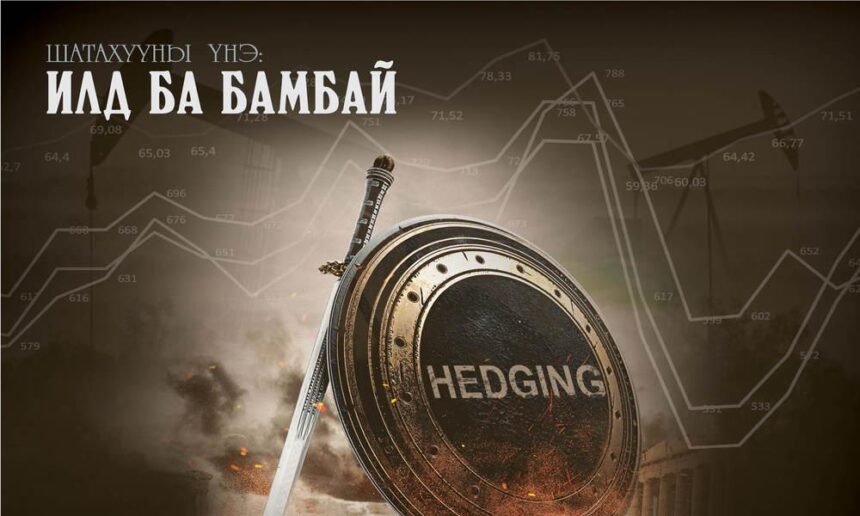Two days ago we saw fuel prices increase in Ulaanbaatar yet again. The AI-92 fuel, which takes up 80 per cent of Mongolia’s total fuel consumption, is currently being sold for 1,855-1,880 MNT per liter, which is 70-90 MNT dearer from the rates a week ago. Also, the price of diesel fuel has also gone up by 30-40 MNT per liter.
When fuel prices increase, we also see an increase in consumer goods, especially food products. However, the correlation doesn’t work the other way – a reduction in fuel prices doesn’t mean cheaper consumer goods. So, when the sword of fuel prices strikes, it cuts down the real income of people.
The fluctuations in fuel prices depend on three key factors: Fuel supply being fully dependent on imports; Fluctuations in MNT rate; and Government attempts to set fuel prices.
Platts price and Mongolia’s sole supplier of fuel
It can be said that Mongolia’s sole supplier of oil products is Rosneft. Their oil refinery at Angarsk is the closest refinery to our northern border, which means it has the lowest cost of transportation. Therefore, Rosneft beats the competition from any other location.
Starting from five years ago, Mongolian companies reached a long term agreement with Rosneft to pre-determine the volume of fuel that will be supplied every month. It has improved the reliability and continuity of our fuel supply.
The agreement tied the price of fuel to the internationally accepted rates produced by Platts, a Singapore-based organization that determines the price of oil products. The price was set to be the average Platts rate of a given month. It has also enabled a better projection of how the price is likely to be set the next month. Previously, the Russian manufacturer set its prices to their liking every month and made a different deal with Mongolian companies that import fuel. At the same time, these prices had also been dependent on changes to Russian exports and other taxes, price fluctuations in the domestic market, and changes to the railway tariffs.
In April 2019, the price of AI-90 and AI-92 fuel increased by 71 USD per tonne, compared to the month before. In May 2019, these prices went up by 47 USD compared to the average prices in April. Hence, the importers have decided to increase the fuel prices offered to customers. If the outlook of Platts prices is not to change, the price of fuel is projected to go up by 22 USD in June, while the price of diesel fuel increases by 17 USD.
Oil prices and USD rates
The price of oil is dependent on its key commodity – crude oil (Graph 1). Both prices are expressed in USD. There are two most commonly used prices on the international market. One is the European / Brent prices, and the other is the U.S. / WTI (West Texas Intermediate) prices. These two prices are subject to constant changes triggered by many different factors. In the bigger picture, these factors often relate to the relations between the United States and OPEC (The Organization of the Petroleum Exporting Countries) as well as Saudi Arabia, Russia, and China.
Graph 1

Globally, the United States and China are the largest consumers of crude oil. Thanks to their shale fracking technology, the United States have recently become the largest producer of oil. The escalation of the trade war between the United States and China impacts the global economy negatively and brings down market demands, which – in turn – reduces oil prices. However, the most recent expectation is that the price of oil will go up, because the commitment these two countries have made to resolve trade issues would affect the global economy positively and increase market demand. With the shale fracking technology, the United States has increased its extraction of oil. The price of oil goes down when the oil reserves increase. If the oil reserves decrease and so does the production, it drives the market demand up and increases prices. This year, it is projected that the United States will see a weaker growth of shale production, which is expected to increase the oil prices rather than bringing the prices down. Also, the positive outlook of the U.S. economy would contribute to increasing oil prices. When the USD gets stronger, it looks as though the price of oil goes down.
OPEC and Russia are freezing their oil production in unison. Analysts expect that it will restrict the supply of oil and remove surpluses, which may even create a shortage and will increase prices.
The United States has put sanctions in place against Iran and Venezuela to stop their oil exports, which continues to drive oil prices higher. Generally, prices usually go up when there is instability in the oil exporting countries, including Iraq, Iran, Libya, Sudan, and Venezuela. Also, warmer seasons contribute to an increasing consumption of oil products, which also increases prices.
The overall expectation today is that the price of oil will increase in the short term. In Mongolia, when USD gets stronger, MNT sees weaker rates. As a result, consumer goods importers are driven to increase their prices.
Government policy in shambles
The Mongolian government pretends that they’re caring for the people when they set the prices of consumer goods. However, this action eventually results in causing more harm than benefit. Fuel prices are still controlled by the government via specially imposed taxes. This special tax, which comprises 25-50 per cent of the fuel prices, has been reduced when USD grew stronger and increased when USD weakened (Graph 2). However, instead of setting this tax as per a certain percentage in the prices at the border, this tax is directly imposed as MNT per tonne. Therefore, the prices don’t go down when and if MNT sees stronger rates.
Graph 2
If the price is set by the market, consumers will benefit the most in the long term. It will also make it easier to predict the market and reduce inflation. It is only the prices set by the market that can give consumers the most accurate information, which will help them understand the cost structure and make decisions for the short and long term. If fuel prices are set by the market instead of the government, there will be a healthy competition between fuel importers. When the fuel importers start cutting down their costs to become more competitive, consumers will enjoy cheaper prices.
Shield that protects from price increases
Even if Mongolian companies realise that the prices will go up next month and want to stock up the fuel bearing their own risks, they cannot order more fuel due to their limited storage capacity. Different types of fuel products require different storage specifications; therefore, it is largely impossible to stock up for a duration of more than one month. For example, they need to exhaust the diesel fuel for winter first, before they can purchase the fuel for summer. Given the lack of free competition, significantly reduced profitability of fuel business, and high loan interest rates, the fuel importers rarely have the financial capability to stock up fuel. Also, if the prices do the unexpected and go down instead of up, they will have to sell at lower prices and run a loss.
Insurance is a way to protect oneself from risks. In commerce, the insurance that protects you from adverse effects if price fluctuations are called ‘hedging’. How does hedging work as a shield?Simply put, hedging works on the basis of doing an agreement on a specific price. When the agreed time comes, the agreed price comes into effect, regardless of how the price on the market has changed (Graph 3). To enable this arrangement, you have to pay a premium in advance. The insured party benefits when the price increases and loses if the price goes down. Vice versa for the party that provides the insurance.
Graph 3
The international commodity traders who have large trade turnovers often use this shield. There is even another type of hedging that gives you an option to choose the new price. If prices decrease and you choose to buy with the decreased price, there is an additional payment. The reason this option is selected is that, if you don’t buy at the reduced price and be able to sell at the same lower price as your competitors, there is a risk of losing your market.
Hedging and having options are highly costly, therefore there is no other choice to use international trading companies as an intermediary. If the government chooses to continue its price controlling policy, they need to build a fund using the revenue from special taxes, so that they can do hedging.
2019.05.02
Trans. by B.Amar







